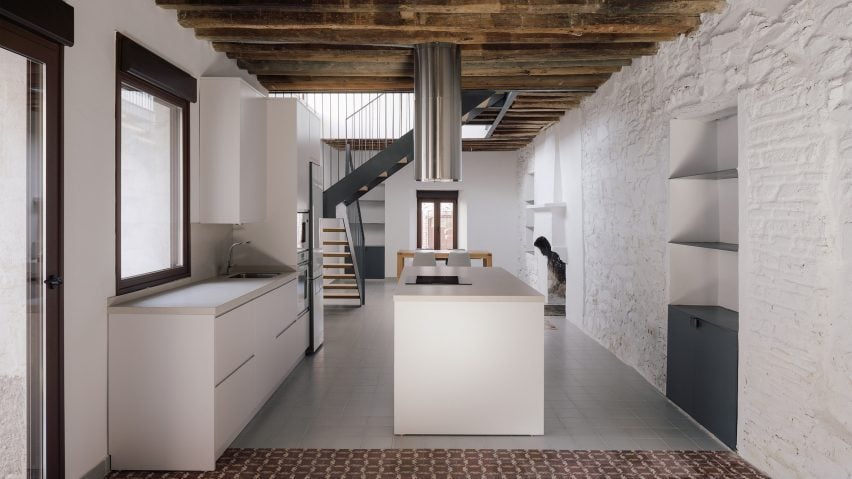
Funcionable restores and updates historic home in Spain
Spanish architecture practice Funcionable has renovated a century-old home in a heritage-protected area of Toledo, making "few but radical" alterations to its historic masonry fabric.
Named Reminiscent Home, the dwelling was in fact the place in which Funcionable founder, Julio Cesar Moreno, had been born, which informed the studio's approach of reconnecting with the building's past.
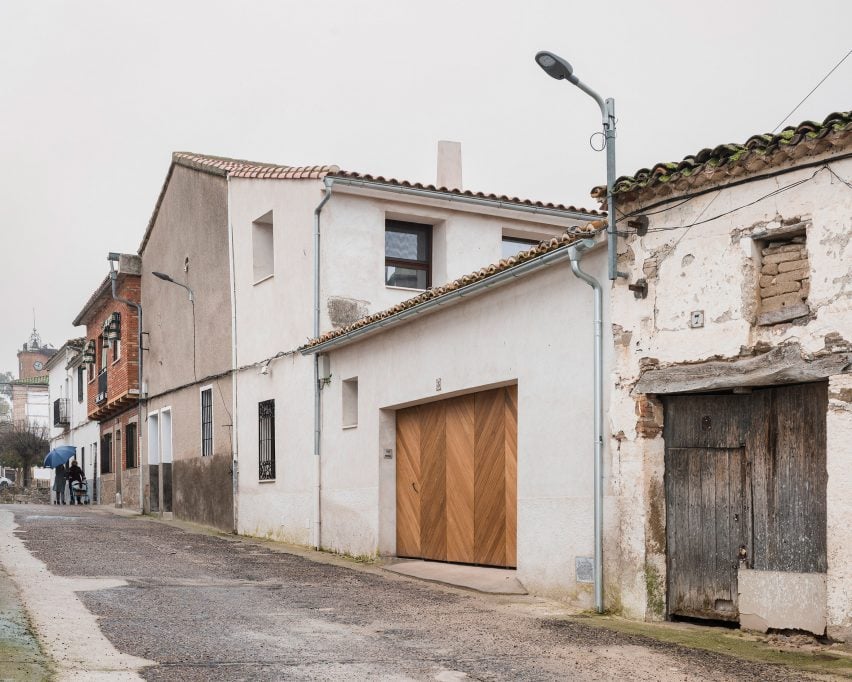
"Many of the transformation operations have resulted in involuntary restitutions of very ancient previous states, prior even to the author's brief period of residence in his early childhood," explained the studio.
"It was decided to preserve its most significant and unique features intact – some of which were discovered within the course of the works – while transforming the rest of the building more freely."
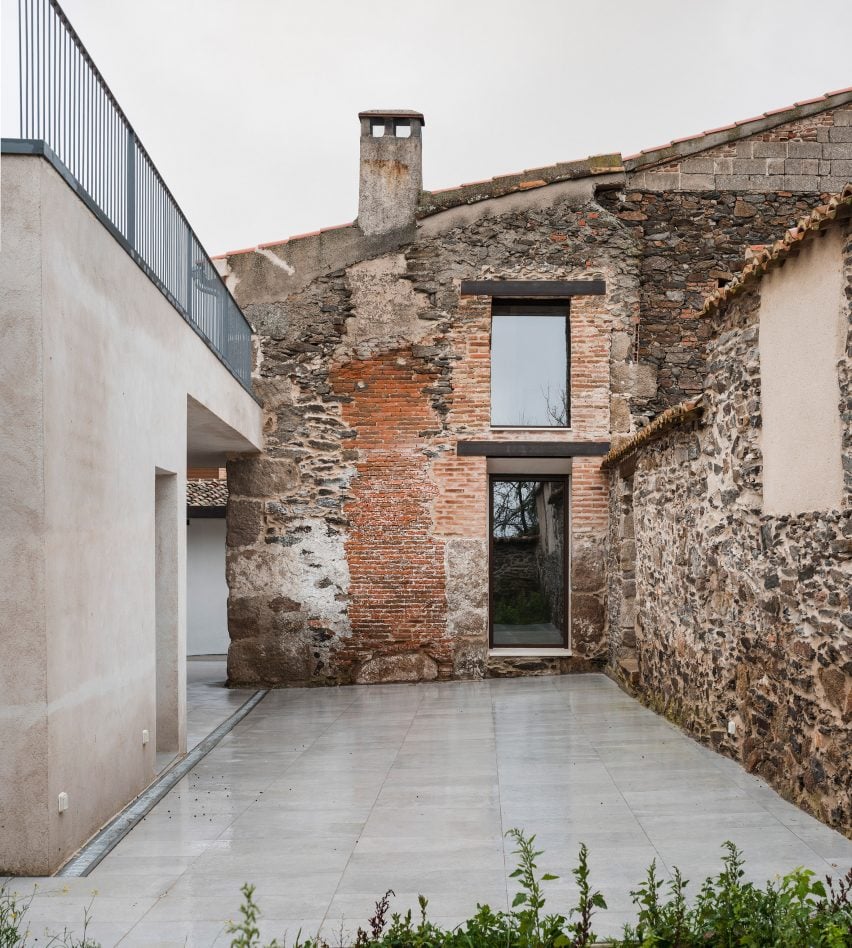
"To this end, few but radical operations were proposed, which at the same time transformed and preserved the building in-depth," it added.
The refurbishment was driven by a concept of opening up and stripping back both its interior and exterior, revealing the original facade and creating space for a large patio and porch between the home and the neighbouring building.
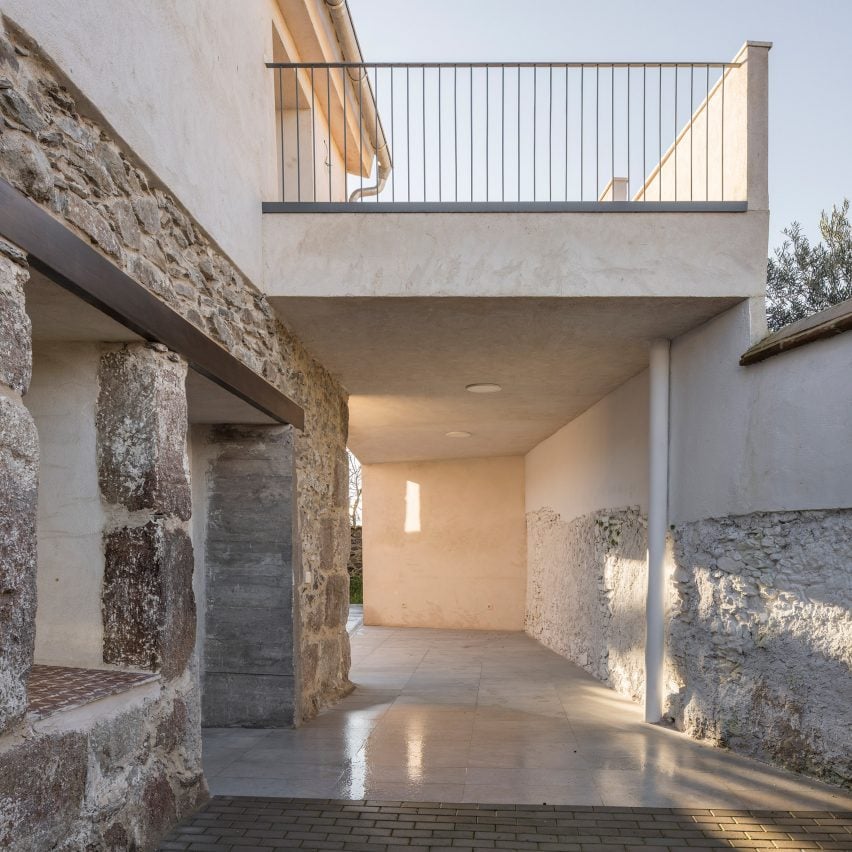
Inside, the internal walls on the ground floor were removed to create a single living, kitchen and dining space that opens onto the rear patio.
Material finishes subtly differentiate the spaces in this open-plan ground floor, with a section of tiled floor and exposed brickwork used in the kitchen.
White-painted masonry along the party wall faces newly-plastered walls opposite, and the whole is unified by an exposed wooden beam ceiling that was previously hidden.
Stripping away later finishes also revealed a series of blocked-up openings and niches in a party wall on the home's southern edge, which have been re-purposed as wardrobes and shelving.

"The open-plan nave that the ground floor has become is spatially qualified not only by the new double height, but also by the dialogue between the two fireplaces of the house, which previously did not share the same space," explained the studio.
"Due to meticulous and artisan work in detail, this peculiar intervention has been possible, which has protected and revealed the ancient and hidden material, spatial and constructive integrity of the building," it added.
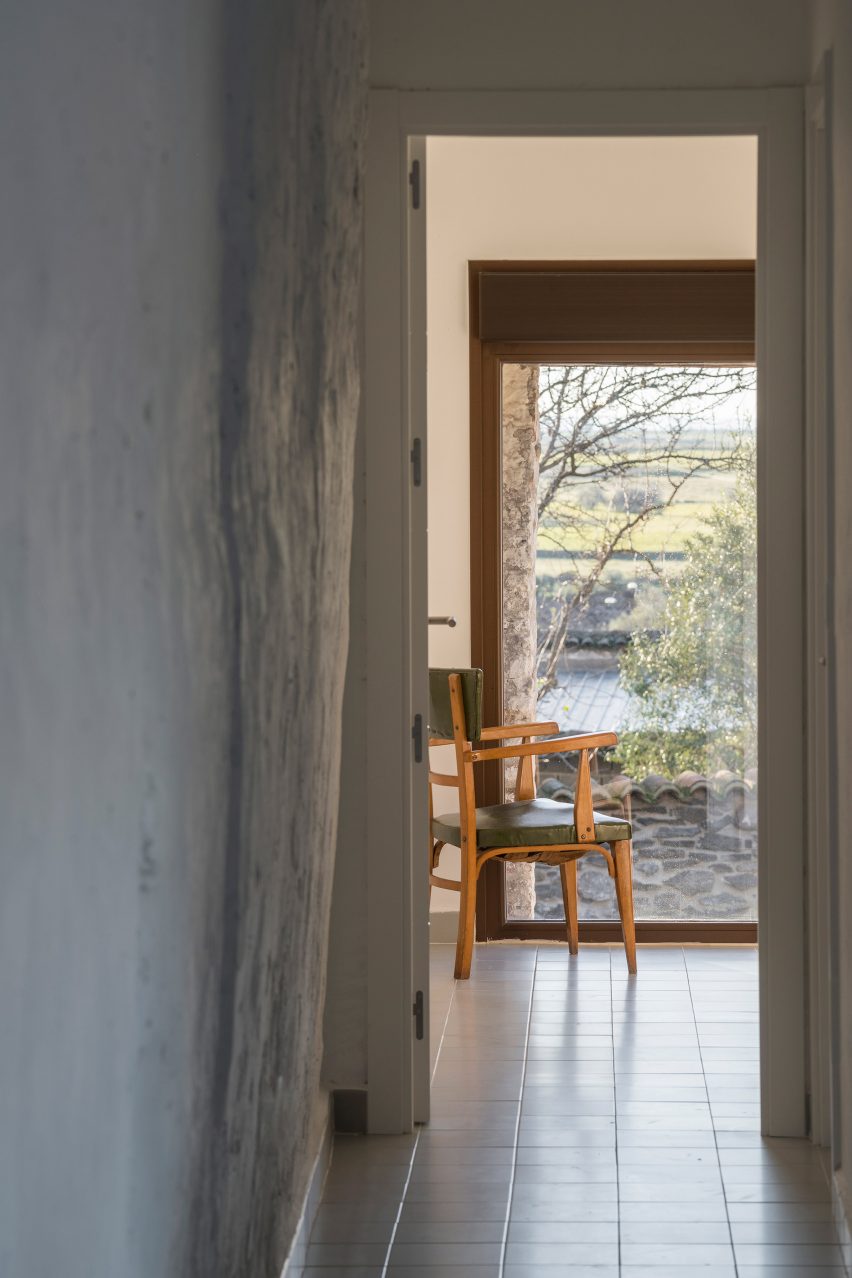
A former attic space has been united with the rest of the home to create a new first floor, accessed via a black steel and timber staircase within a double-height stairwell illuminated by a large north-facing window.
Three bedrooms, a bathroom and a work area occupy this first floor, which is finished externally in pale plaster that contrasts the rough masonry of the ground floor.
Elsewhere, Greek studio Doriza Design recently converted a 19th-century stone building in Crete into a holiday home and Studio Guma converted a stone farmhouse into a "family sanctuary" in Normandy.
The photography is by Imagen Subliminal.